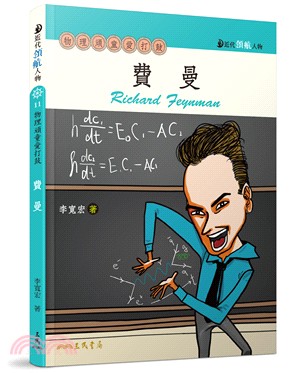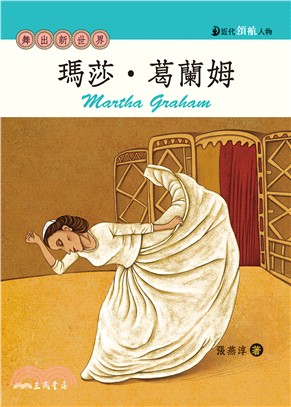非平衡態量子場論(簡體書)
商品資訊
ISBN13:9787510005633
出版社:世界圖書(北京)出版公司
作者:(瑞典)拉梅‧J.
出版日:2010/04/01
裝訂/頁數:平裝/536頁
規格:26cm*19cm (高/寬)
商品簡介
目次
相關商品
商品簡介
The purpose of this book is to provide an introduction to the applications of quantum field theoretic methods to systems out of equilibrium. The reason for adding a book on the subject of quantum field theory is two-fold: the presentation is, to my knowledge, the first to extensively present and apply to non-equilibrium phenomena the real-time approach originally developed by Schwinger, and subsequently applied by Keldysh and others to derive transport equations. Secondly, the aim is to show the universality of the method by applying it to a broad range of phenomena. The book should thus not just be of interest to condensed matter physicists, but to physicists in general as the method is of general interest with applications ranging the whole scale from high-energy to soft condensed matter physics. The universality of the method, as testified by the range of topics covered, reveals that the language of quantum fields is the universal description of fluctuations, be they of quantum nature, thermal or classical stochastic. The book is thus intended as a contribution to unifying the languages used in separate fields of physics, providing a universal tool for describing non-equilibrium states.
目次
Preface
1 Quantum fields
1.1 Quantum mechanics
1.2 N-particle system
1.2.1 Identical particles
1.2.2 Kinematics of fermions
1.2.3 Kinematics of bosons
1.2.4 Dynamics and probability current and density
1.3 Fermi field
1.4 Bose field
1.4.1 Phonons
1.4.2 Quantizing a classical field theory
1.5 Occupation number representation
1.6 Summary
2 Operators on the multi-particle state space
2.1 Physical observables
2.2 Probability density and number operators
2.3 Probability current density operator
2.4 Interactions
2.4.1 Two-particle interaction
2.4.2 Fermio boson interaction
2.4.3 Electron-phonon interaction
2.5 The statistical operator
2.6 Summary
3 Quantum dynamics and Greens functions
3.1 Quantum dynamics
3.1.1 The SchrSdinger picture
3.1.2 The Heisenberg picture
3.2 Second quantization
3.3 Greens functions
3.3.1 Physical properties and Greens functions
3.3.2 Stable of one-particle Greens functions
3.4 Equilibrium Greens functions
3.5 Summary
4 Non-equilibrium theory
4.1 The non-equilibrium problem
4.2 Ground state formalism
4.3 Closed time path formalism
4.3.1 Closed time path Greens function
4.3.2 Non-equilibrium perturbation theory
4.3.3 Wicks theorem
4.4 Non-equilibrium diagrammatics
4.4.1 Particles coupled to a classical field
4.4.2 Particles coupled to a stochastic field
4.4.3 Interacting fermions and bosons
4.5 The self-energy
4.5.1 Non-equilibrium Dyson equations
4.5.2 Skeleton diagrams
4.6 Summary
5 Real-time formalism
5.1 Real-time matrix representation
5.2 Real-time diagrammatics
5.2.1 Feynman rules for a scalar potential
5.2.2 Feynman rules for interacting bosons and fermions
5.3 Triagonal and symmetric representations
5.3.1 Fermion-boson coupling
5.3.2 Two-particle interaction
5.4 The real rules: the RAK-rules
5.5 Non-equilibrium Dyscn equations
5.6 Equilibrium Dyscn equation
5.7 Real-time versus imaginary-time formalism
5.7.1 Imaginary-time formalism
5.7.2 Imaginary-time Greens functions
5.7.3 Analytical continuation procedure
5.7.4 Kadanoff-Baym equations
5.8 Summary
6 Linear response theory
6.1 Linear response
6.1.1 Density re~,ponse
6.1.2 Current response
6.1.3 Ccnductivity tensor
6.1.4 Ccnductance
6.2 Linear response cf Greens functions
6.3 Properties cf respone hmctions
6.4 Stability cf the thermal equilibrium ,tate
6.5 Fluctuation-dissipation theorem
6.6 Time-reversal symmetry
6.7 Scattering and correlation functions
6.8 Summary
7 Quantum kinetic equations
7.1 Left-right subtracted Dyson equation
7.2 Wigner or mixed coordinates
7.3 Gradient approximation
7.3.1 Spectral weight function
7.3.2 Quasi-particle approximation
7.4 Impurity scattering
7.4.1 Boltzmannian motion in a random potential
7.4.2 Brownian motion
7.5 Quasi-classical Greens function technique
7.5.1 Electron-phonon interaction
7.5.2 Renormalization of the a.c. conductivity
7.5.3 Excitation representation
7.5.4 Particle conservation
7.5.5 Impurity scattering
7.6 Beyond the quasi-classical approximation
7.6.1 Thermo-electrics and magneto-transport
7.7 Summary
8 Non-equilibrium superconductivity
8.1 BCS-theory
8.1.1 Nambu or particle-hole space
8.1.2 Equations of motion in Nambu Keldysh space
8.1.3 Greens functions and gauge transformations
8.2 Quasi-classical Greens function theory
8.2.1 Normalization condition
8.2.2 Kinetic equation
8.2.3 Spectral densities
8.3 Trajectory Greens functions
8.4 Kinetics in a dirty superconductor
8.4.1 Kinetic equation
8.4.2 Ginzburg-Landau regime
8.5 Charge imbalance
8.6 Summary
9 Diagrammatics and generating functionals
9.1 Diagrammatics
9.1.1 Propagators and vertices
9.1.2 Amplitudes and superposition
9.1.3 Fundamental dynamic relation
9.1.4 Low order diagrams
9.2 Generating functional
9.2.1 Fhnctional differentiation
9.2.2 From diagrammatics to differential equations
9.3 Connection to operator formalism
9.4 Fermions and Grassmann variables
9.5 Generator of connected amplitudes
9.5.1 Source derivative proof
9.5.2 Combinatorial proof
9.5.3 Functional equation for the generator
9.6 One-particle irreducible vertices
9.6.1 Symmetry broken states
9.6.2 Greens functions and one-particle irreducible vertices
9.7 Diagrammatics and action
9.8 Effective action and skeleton diagrams
9.9 Summary
10 Effective action
10.1 Functional integration
10.1.1 Functional Fourier transformation
10.1.2 Gaussian integrals
10.1.3 Fermionic path integrals
10.2 Generators as functional integrals
10.2.1 Euclid versus Minkowski
10.2.2 Wicks theorem and functionals
10.3 Generators and 1PI vacuum diagrams
10.4 1PI loop expansion of the effective action
10.5 Two-particle irreducible effective action
10.5.1 The 2PI loop expansion of the effective action
10.6 Effective action approach to Bose gases
10.6.1 Dilute Bose gases
10.6.2 Effective action formalism for bosons
10.6.3 Homogeneous Bose gas
10.6.4 Renormalization of the interaction
10.6.5 Inhomogeneous Bose gas
10.6.6 Loop expansion for a trapped Bose gas
10.7 Summary
11 Disordered conductors
11.1 Localization
11.1.1 Scaling theory of localization
11.1.2 Coherent backscattering
11.2 Weak localization
11.2.1 Quantum correction to conductivity
11.2.2 Cooperon equation
11.2.3 Quantum interference and the Cooperon
11.2.4 Quantum interference in a magnetic field
……
12 Classical Statistical Dynamics
Appendices
1 Quantum fields
1.1 Quantum mechanics
1.2 N-particle system
1.2.1 Identical particles
1.2.2 Kinematics of fermions
1.2.3 Kinematics of bosons
1.2.4 Dynamics and probability current and density
1.3 Fermi field
1.4 Bose field
1.4.1 Phonons
1.4.2 Quantizing a classical field theory
1.5 Occupation number representation
1.6 Summary
2 Operators on the multi-particle state space
2.1 Physical observables
2.2 Probability density and number operators
2.3 Probability current density operator
2.4 Interactions
2.4.1 Two-particle interaction
2.4.2 Fermio boson interaction
2.4.3 Electron-phonon interaction
2.5 The statistical operator
2.6 Summary
3 Quantum dynamics and Greens functions
3.1 Quantum dynamics
3.1.1 The SchrSdinger picture
3.1.2 The Heisenberg picture
3.2 Second quantization
3.3 Greens functions
3.3.1 Physical properties and Greens functions
3.3.2 Stable of one-particle Greens functions
3.4 Equilibrium Greens functions
3.5 Summary
4 Non-equilibrium theory
4.1 The non-equilibrium problem
4.2 Ground state formalism
4.3 Closed time path formalism
4.3.1 Closed time path Greens function
4.3.2 Non-equilibrium perturbation theory
4.3.3 Wicks theorem
4.4 Non-equilibrium diagrammatics
4.4.1 Particles coupled to a classical field
4.4.2 Particles coupled to a stochastic field
4.4.3 Interacting fermions and bosons
4.5 The self-energy
4.5.1 Non-equilibrium Dyson equations
4.5.2 Skeleton diagrams
4.6 Summary
5 Real-time formalism
5.1 Real-time matrix representation
5.2 Real-time diagrammatics
5.2.1 Feynman rules for a scalar potential
5.2.2 Feynman rules for interacting bosons and fermions
5.3 Triagonal and symmetric representations
5.3.1 Fermion-boson coupling
5.3.2 Two-particle interaction
5.4 The real rules: the RAK-rules
5.5 Non-equilibrium Dyscn equations
5.6 Equilibrium Dyscn equation
5.7 Real-time versus imaginary-time formalism
5.7.1 Imaginary-time formalism
5.7.2 Imaginary-time Greens functions
5.7.3 Analytical continuation procedure
5.7.4 Kadanoff-Baym equations
5.8 Summary
6 Linear response theory
6.1 Linear response
6.1.1 Density re~,ponse
6.1.2 Current response
6.1.3 Ccnductivity tensor
6.1.4 Ccnductance
6.2 Linear response cf Greens functions
6.3 Properties cf respone hmctions
6.4 Stability cf the thermal equilibrium ,tate
6.5 Fluctuation-dissipation theorem
6.6 Time-reversal symmetry
6.7 Scattering and correlation functions
6.8 Summary
7 Quantum kinetic equations
7.1 Left-right subtracted Dyson equation
7.2 Wigner or mixed coordinates
7.3 Gradient approximation
7.3.1 Spectral weight function
7.3.2 Quasi-particle approximation
7.4 Impurity scattering
7.4.1 Boltzmannian motion in a random potential
7.4.2 Brownian motion
7.5 Quasi-classical Greens function technique
7.5.1 Electron-phonon interaction
7.5.2 Renormalization of the a.c. conductivity
7.5.3 Excitation representation
7.5.4 Particle conservation
7.5.5 Impurity scattering
7.6 Beyond the quasi-classical approximation
7.6.1 Thermo-electrics and magneto-transport
7.7 Summary
8 Non-equilibrium superconductivity
8.1 BCS-theory
8.1.1 Nambu or particle-hole space
8.1.2 Equations of motion in Nambu Keldysh space
8.1.3 Greens functions and gauge transformations
8.2 Quasi-classical Greens function theory
8.2.1 Normalization condition
8.2.2 Kinetic equation
8.2.3 Spectral densities
8.3 Trajectory Greens functions
8.4 Kinetics in a dirty superconductor
8.4.1 Kinetic equation
8.4.2 Ginzburg-Landau regime
8.5 Charge imbalance
8.6 Summary
9 Diagrammatics and generating functionals
9.1 Diagrammatics
9.1.1 Propagators and vertices
9.1.2 Amplitudes and superposition
9.1.3 Fundamental dynamic relation
9.1.4 Low order diagrams
9.2 Generating functional
9.2.1 Fhnctional differentiation
9.2.2 From diagrammatics to differential equations
9.3 Connection to operator formalism
9.4 Fermions and Grassmann variables
9.5 Generator of connected amplitudes
9.5.1 Source derivative proof
9.5.2 Combinatorial proof
9.5.3 Functional equation for the generator
9.6 One-particle irreducible vertices
9.6.1 Symmetry broken states
9.6.2 Greens functions and one-particle irreducible vertices
9.7 Diagrammatics and action
9.8 Effective action and skeleton diagrams
9.9 Summary
10 Effective action
10.1 Functional integration
10.1.1 Functional Fourier transformation
10.1.2 Gaussian integrals
10.1.3 Fermionic path integrals
10.2 Generators as functional integrals
10.2.1 Euclid versus Minkowski
10.2.2 Wicks theorem and functionals
10.3 Generators and 1PI vacuum diagrams
10.4 1PI loop expansion of the effective action
10.5 Two-particle irreducible effective action
10.5.1 The 2PI loop expansion of the effective action
10.6 Effective action approach to Bose gases
10.6.1 Dilute Bose gases
10.6.2 Effective action formalism for bosons
10.6.3 Homogeneous Bose gas
10.6.4 Renormalization of the interaction
10.6.5 Inhomogeneous Bose gas
10.6.6 Loop expansion for a trapped Bose gas
10.7 Summary
11 Disordered conductors
11.1 Localization
11.1.1 Scaling theory of localization
11.1.2 Coherent backscattering
11.2 Weak localization
11.2.1 Quantum correction to conductivity
11.2.2 Cooperon equation
11.2.3 Quantum interference and the Cooperon
11.2.4 Quantum interference in a magnetic field
……
12 Classical Statistical Dynamics
Appendices
主題書展
更多
主題書展
更多書展今日66折
您曾經瀏覽過的商品
購物須知
大陸出版品因裝訂品質及貨運條件與台灣出版品落差甚大,除封面破損、內頁脫落等較嚴重的狀態,其餘商品將正常出貨。
特別提醒:部分書籍附贈之內容(如音頻mp3或影片dvd等)已無實體光碟提供,需以QR CODE 連結至當地網站註冊“並通過驗證程序”,方可下載使用。
無現貨庫存之簡體書,將向海外調貨:
海外有庫存之書籍,等候約45個工作天;
海外無庫存之書籍,平均作業時間約60個工作天,然不保證確定可調到貨,尚請見諒。
為了保護您的權益,「三民網路書店」提供會員七日商品鑑賞期(收到商品為起始日)。
若要辦理退貨,請在商品鑑賞期內寄回,且商品必須是全新狀態與完整包裝(商品、附件、發票、隨貨贈品等)否則恕不接受退貨。
























